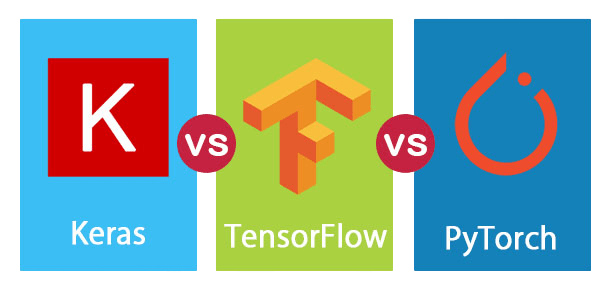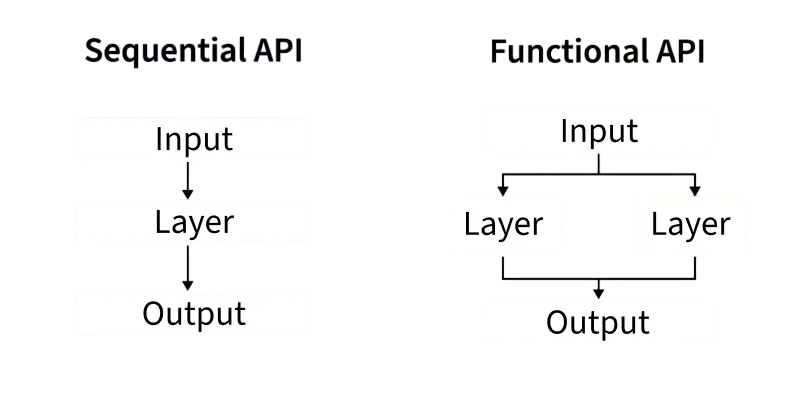
- What is Keras?
- Keras vs Other Frameworks
- Installing Keras
- Understanding Sequential and Functional APIs
- Building Your First Neural Network
- Model Compilation and Training
- Evaluating Model Performance
- Saving and Loading Models
- Conclusion
What Is Keras?
Keras is a high-level neural network API written in Python that allows for easy and fast prototyping of deep learning models. Initially developed by François Chollet, it became immensely popular due to its simplicity and user-friendly interface. Keras acts as an abstraction layer that can run on top of lower-level deep learning backends such as TensorFlow, Theano, or CNTK. However, with the release of TensorFlow 2.0, Keras Tutorial is now integrated as its official high-level API, making it more robust and better supported. The main goal of Keras is to simplify the creation of deep learning models. It does this by offering an intuitive and concise API, enabling both researchers and developers to build complex neural networks with minimal code. Whether you are building a simple feedforward network or a multi-input, multi-output model, Keras ,Evaluating model performance provides the tools to make model building efficient and understandable.Keras is an open-source, high-level neural networks API written in Python. It is designed to simplify the process of building, Machine Learning Training , First Neural Network and deploying deep learning models. Originally developed by François Chollet, Keras is now the official high-level API of TensorFlow, making it tightly integrated with the TensorFlow ecosystem.Keras provides a user-friendly, modular, and extensible interface, Evaluating Model Performance allowing developers and researchers to build deep learning models quickly and efficiently. Its simple syntax makes it accessible to beginners, while its flexibility supports advanced research and experimentation.
Ready to Get Certified in Machine Learning? Explore the Program Now Machine Learning Online Training Offered By ACTE Right Now!
Keras vs Other Frameworks
Keras is often compared to other deep learning frameworks like TensorFlow (low-level API), PyTorch, Theano, and MXNet. Each framework has its own strengths, and the best choice depends on the specific use case and user preferences.

Keras vs TensorFlow (Low-Level API):
- Keras: High-level, user-friendly, ideal for beginners and fast prototyping.
- TensorFlow (Core): More control, better for production, supports complex model customization.
- Integration: Keras is now the official high-level API of TensorFlow, combining ease of use with TensorFlow’s power.
- Keras: Easier syntax, more abstract, better for quick development and prototyping.
- PyTorch: More flexible, Python, dynamic computation graph (eager execution), widely used in research and increasingly in production.
- Learning Curve: Keras is easier for beginners; PyTorch offers more control for advanced users.
- Theano: Low-level, no longer actively developed.
- Keras: Was originally built on Theano but moved fully to TensorFlow. Easier and more modern.
- MXNet: Backed by AWS, scalable, supports dynamic and static graphs.
- Keras: Simpler, but less native support for distributed training compared to MXNet.
Keras vs PyTorch:
Keras vs Theano:
Keras vs MXNet:
Installing Keras
In modern Machine Learning Training workflows, Keras is widely used and can be installed as part of TensorFlow 2.x, eliminating the need to install it separately. Here’s how you can get started:
pip install tensorflowThis command installs TensorFlow and Keras together. Once installed, you can verify the installation:
- import tensorflow as tf
- print(tf.keras.__version__)
It’s also a good idea to create a virtual environment to manage dependencies and avoid conflicts:
- python -m venv keras_env
- source keras_env/bin/activate
To Explore Machine Learning in Depth, Check Out Our Comprehensive Machine Learning Online Training To Gain Insights From Our Experts!
Understanding Sequential and Functional APIs
Keras provides two main ways to build models: the Sequential API and the Functional API.
Sequential API
This API is best suited for models where each layer flows into the next, in a single input and single output stack:
- from tensorflow.keras.models import Sequential
- from tensorflow.keras.layers import Dense
- model = Sequential([
- Dense(64, activation=’relu’, input_shape=(100,)),
- Dense(10, activation=’softmax’)
- ])

Functional API
When models require more flexibility such as multiple inputs or outputs, or shared layers the Functional API is the better choice:
- from tensorflow.keras import Input, Model
- from tensorflow.keras.layers import Dense
- inputs = Input(shape=(100,))
- x = Dense(64, activation=’relu’)(inputs)
- outputs = Dense(10, activation=’softmax’)(x)
- model = Model(inputs, outputs)
Building Your First Neural Network
To demonstrate the simplicity of Keras Tutorial, let’s create a neural network to classify handwritten digits from the MNIST dataset.
- from tensorflow.keras.datasets import mnist
- from tensorflow.keras.models import Sequential
- from tensorflow.keras.layers import Dense, Flatten
- from tensorflow.keras.utils import to_categorical
- (x_train, y_train), (x_test, y_test) = mnist.load_data()
- x_train, x_test = x_train / 255.0, x_test / 255.0
- y_train, y_test = to_categorical(y_train), to_categorical(y_test)
- model = Sequential([
- Flatten(input_shape=(28, 28)),
- Dense(128, activation=’relu’),
- Dense(10, activation=’softmax’)
- ])
Looking to Master Machine Learning? Discover the Machine Learning Expert Masters Program Training Course Available at ACTE Now!
Model Compilation and Training
Before training, the model must be compiled. This involves specifying a loss function, optimizer, and metrics to evaluate during training.
- model.compile(optimizer=’adam’,
- loss=’categorical_crossentropy’,
- metrics=[‘accuracy’])
Training the model:
- model.fit(x_train, y_train, epochs=5, batch_size=32, validation_split=0.2)
Evaluating Model Performance
After training, Once a model is trained, it’s crucial to evaluate how well it performs on unseen data First neural network. This step helps determine whether the model is generalizing or overfitting. Keras provides built-in tools to assess model performance using the .evaluate() method. This method computes the loss and any additional metrics specified during compilation, based on a test dataset.
use the evaluate method to test the model’s performance:
- loss, accuracy = model.evaluate(x_test, y_test)
- print(f”Test Accuracy: {accuracy * 100:.2f}%”)
You can also visualize the training process by plotting loss and accuracy curves using libraries like matplotlib.
Saving and Loading Models
Keras models can be saved in various formats:
- model.save(“model.h5”) # Save in HDF5 format
To load the model:
- from tensorflow.keras.models import load_model
- model = load_model(“model.h5”)
You can also use the TensorFlow SavedModel format:
- model.save(“saved_model”)
Preparing for Machine Learning Job Interviews? Have a Look at Our Blog on Machine Learning Interview Questions and Answers To Ace Your Interview!
Conclusion
Keras offers a perfect blend of simplicity and power. Its integration with TensorFlow provides robust deployment options, while its user-friendly API is ideal for both beginners and professionals. From quick prototyping to scalable production systems, Keras continues to be a go-to tool for deep learning practitioners. Whether you’re a student exploring neural networks for the first time or a professional building large-scale applications, mastering Keras will enhance your Machine Learning Training toolkit significantly.Model compilation and training are essential steps in developing deep learning models with Keras. Through a simple and intuitive interface, Keras Tutorial allows developers to configure a model’s learning process using optimizers,First Neural Network , loss functions, Python and evaluation metrics. Once compiled, the training process handled via the method efficiently updates the model’s parameters based on the data provided. These steps abstract much of the complexity behind neural network optimization, Evaluating Model Performance making Keras a powerful tool for both beginners and experienced practitioners. Mastering these stages is key to building models that learn effectively and generalize well to new data.




